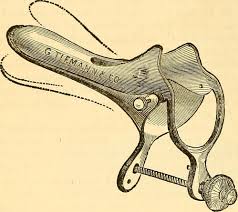International lack of knowledge about vulvas hurts women
More stories from Ellen Garrett

Lady bits, hoo ha, vaj-j, vag. The bringer of life, controller of cycles, the DESTROYER OF WORLDS: the vagina. But how could the vagina be the destroyer of worlds? Let us take a trip down memory lane, you may remember a movie coming out in 2008 called Teeth. This story flirts with the age-old folk tale vagina dentata in which a woman’s vagina is said to contain teeth. The existence of this folktale and it’s resurfacing in Teeth brings up a few very important ideas concerning ‘down there’. Including the origins of the taboo, the medical implications, and the systemic oppression of women.
The vagina has long been on the no-no list of things to talk about in public. According to professor Emma Rees, the story of vagina dentata has universally been used to perpetuate a morbid fear of female genitalia. So this clearly translates into it not being an often used word, and when it is used, it is used incorrectly. According to Catherine Peterson, the vagina is the muscular canal that connects the uterus to the vulva. The vulva, however, includes the mons pubis (or pubic mound), labia majora and minora, clitoris, urethra, and the vagina. Aka the whole she-bang.
Aside from using the blanket term of ‘vagina’ to refer to the entire female genitalia being just plain inaccurate, it also has implications that extend beyond that. According to professor of psychology Laurie Mintz, by calling the female anatomy the ‘vagina’ we are referring to the female sexual organ as the part that gives heterosexual men pleasure. This forces women into a corner where the only way that one of their body parts could be embraced is for the pleasure of someone else. Aside from talking about the actual existence of the vulva being considered taboo, let us move on to something considered even more taboo.
Menstruation.
It is very easy to preach that we “should not be afraid of menstruation”. What is harder is changing the view in places where not knowing basic medical facts about your period and vulva can be life-threatening. In other countries, the fear surrounding this subject comes with real consequences. According to the Hindustan Times, in India because of taboos, many women and girls are not even told that they will bleed every month, let alone be able to handle it with dignity and hygiene. Hygiene is even more important in middle and low-income countries where women are faced with the absence of clean water, sanitation, and supplies of sanitary products.
Let us talk numbers, according to professor of sociomedical science Marni Sommer, every day more than 800 million women and girls of reproductive age will be having their periods. Another indistinguishable amount will be bleeding down there for many other reasons, such as post-partum (or after birth) hemorrhages, miscarriages, and as a result of conditions such as endometriosis, growths such as polyps and fibroids, and cervical cancer. But why would this number be almost impossible to find out? Well, because this taboo does not only affect social climates and everyday lives, it *flows* over to inhibit advances in medical research. According to Columbia University’s School of Health, this lack of conversation means that medical professionals are unable to properly take care of their own bodies and much less those of their dependents.
The history of female anatomy and reproduction has long been shrouded in mystery. In the old, old, olden days, it was the vulva, not the penis that was a sign of fertility. According to writer Viv Groskop, this translated into medieval times with Sheela na gigs. These are figurative carvings of naked women with exaggerated vulvas being pulled open. While these carvings originated in France and Spain, they were soon seen in churches throughout Britain and Ireland.
In the first wave of vulva-censorship, 19th-century church leaders labeled the carvings as “obscene” and began destroying them. Midwife instructor Ina May Gaskin says that this lead to both the increased medicalization of birth where we are seeing women wanting to go to the hospital instead of using things like midwives and the increased fear of labor. This is because these figures were used to reassure young women about the capabilities of their bodies. The figure could easily push her own head out, much less have trouble birthing a child.
Now at this same exact time in America, James Marion Sims was beginning his research. Often called the ‘father of gynecology’, according to Brynn Holland, he invented tools such as the vaginal speculum. He also pioneered surgeries fixing conditions such as vesicovaginal fistula which is where a tear occurs between the urethra and vagina during childbirth.
 However, recently, this research has gotten lots of backlash because he operated on enslaved black womyn without the use of anesthesia. Because of this backlash, statues of him in South Carolina, Pennsylvania, and New York have all been removed in favor of plaques that depict the names of the three womyn he operated on the most: Anarcha, Lucy, and Betsey. However, he did not only operate on these three womyn, he actually operated on over a dozen womyn, again all black, enslaved, and without anesthesia. His use of black bodies as medical test subjects falls into a long line of unethical history in the medical field, overwhelmingly contributing to the oppression of women.
However, recently, this research has gotten lots of backlash because he operated on enslaved black womyn without the use of anesthesia. Because of this backlash, statues of him in South Carolina, Pennsylvania, and New York have all been removed in favor of plaques that depict the names of the three womyn he operated on the most: Anarcha, Lucy, and Betsey. However, he did not only operate on these three womyn, he actually operated on over a dozen womyn, again all black, enslaved, and without anesthesia. His use of black bodies as medical test subjects falls into a long line of unethical history in the medical field, overwhelmingly contributing to the oppression of women.
Now, we have explored the entire female anatomy, the needless taboo, the sexist lack of medical knowledge on this subject and the racist/sexist upcoming of the medical research we do have. In the end, we need to encourage knowledge about our own and other peoples bodies. This is the only way to remove this form o
f oppression and improve the lives of fifty percent of the world’s population.









